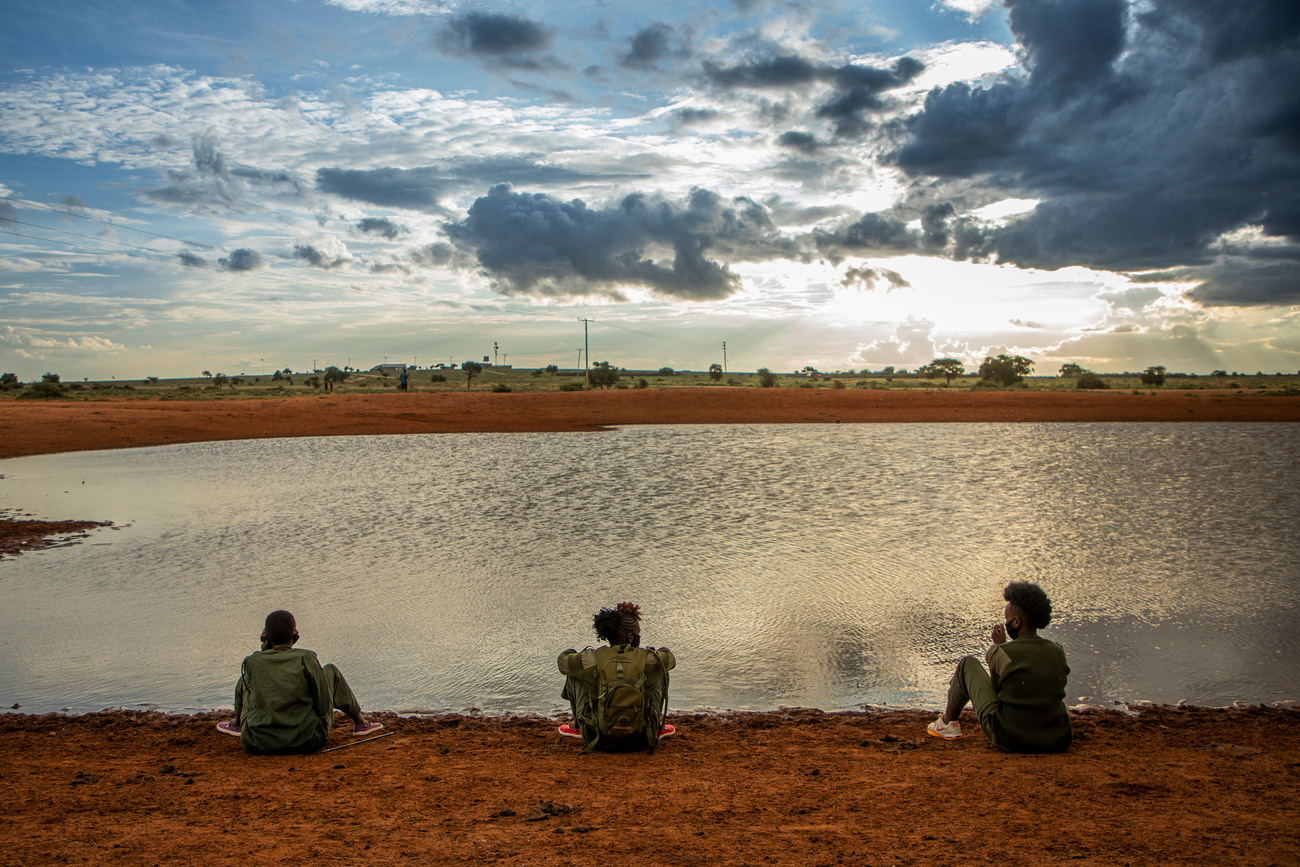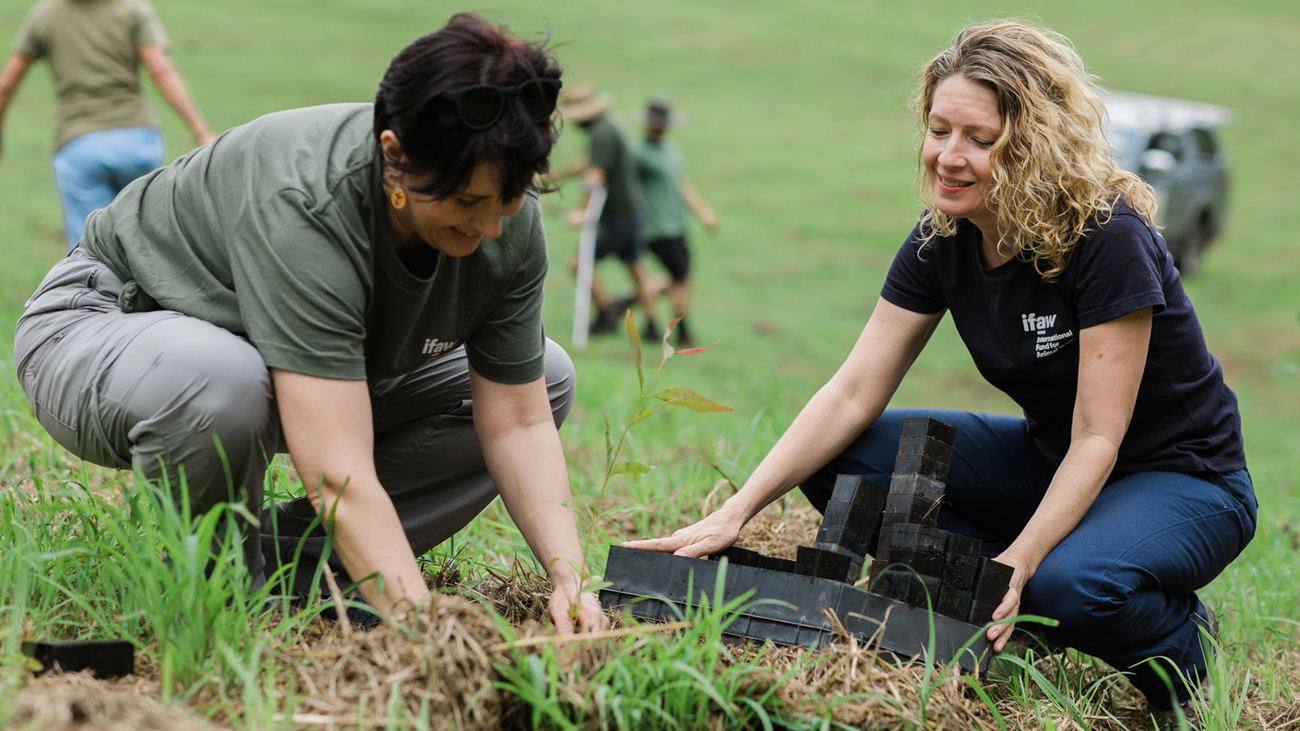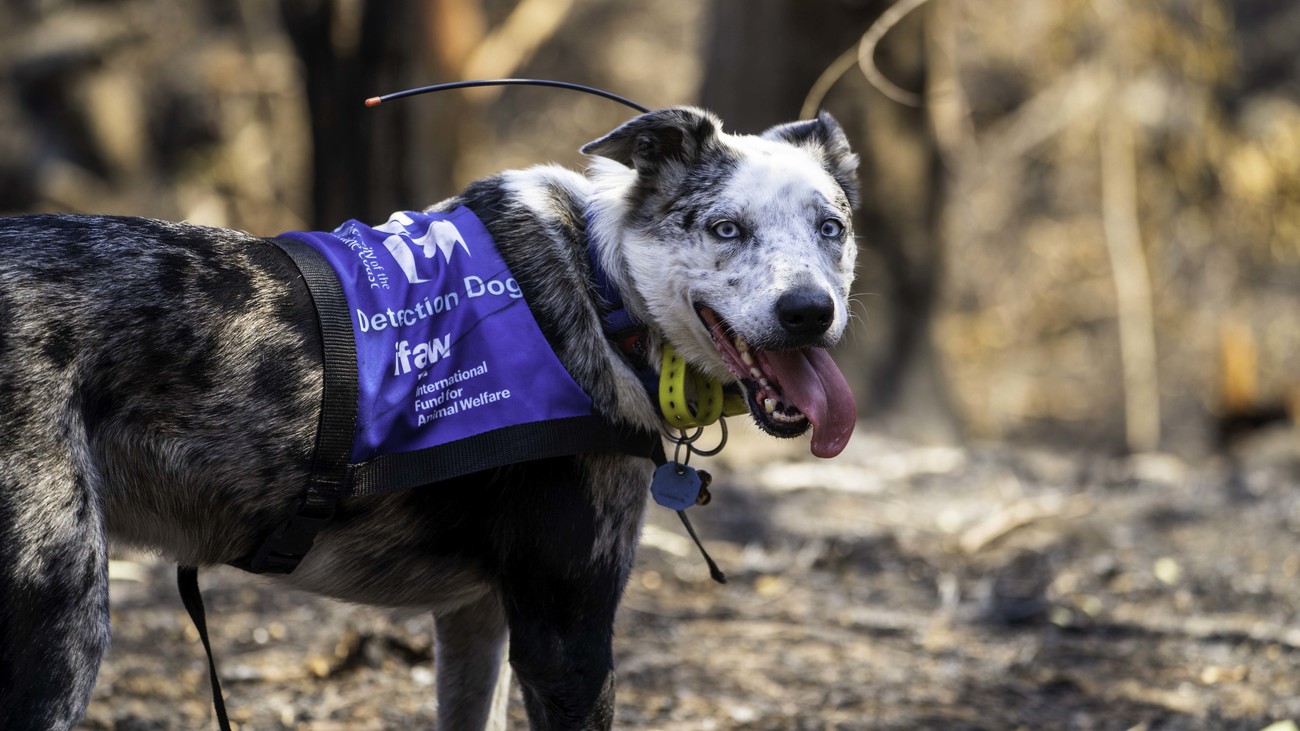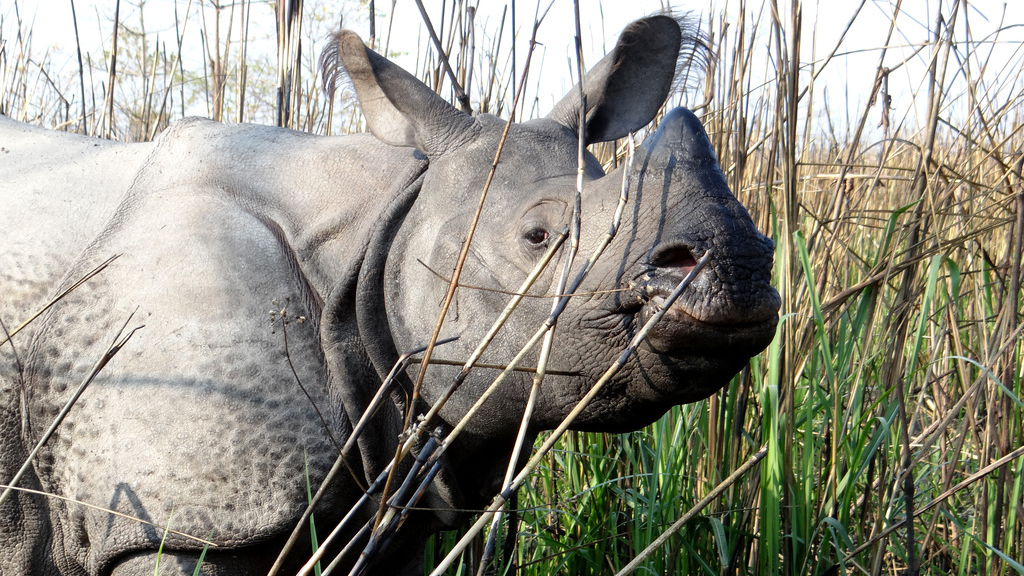landscape conservation
landscape conservation
Despite the extraordinary impact of COVID-19, IFAW was able to continue to support essential landscape conservation in fiscal year 20, forge new partnerships and address challenges in a holistic way. This year we once again achieved noteworthy success in the priority landscapes where we work across Africa and Asia.
We remain committed to working with governments, local communities, and other stakeholders to ensure connected conservation networks become a reality that provide wildlife, particularly keystone species like elephants, with the space they need to survive and thrive. This year IFAW-supported rangers recovered 2,498 kilograms of elephant ivory and arrested 1,289 poachers. Plus, IFAW-supported efforts added another 350 square kilometres of habitat to Manas National Park in India.
We continue to link conservation and community livelihoods through substantive community engagement and participation. This year we supported livelihood diversification activities that resulted in an astonishing US$278,000 in direct income for communities in Malawi, Zambia, and Kenya. We supported training for 289 people with skills like tailoring, brickmaking, construction, and beekeeping in the places where we work, including China and India.
Our work is driven by our belief that when people thrive, animals will thrive along with them.
tree planting initiatives
The 2019-20 Australian bushfires scorched the landscape and shattered the New South Wales koala population and their habitats. Given that habitat destruction is already the number one threat to koalas, it is even more crucial that we rebuild and restore their critical habitat.
A core element of our work is restoration of critical habitats. By rebuilding vital wildlife corridors, we’re giving our iconic koalas and other native species the safe refuges they so desperately need.
Together with Bangalow Koalas, we have planted more than 12,000 trees on four properties in the Northern Rivers region of NSW. While taking care to identify several COVID-19-related adjustments, 5,000 trees were planted in one three-day event this August with the help of dozens of dedicated volunteers.
Our work continues as we partner with more groups to expand our restoration efforts in Australia, and in June we signed a Memorandum of Understanding with the Great Eastern Ranges (GER), a large-scale conservation initiative to restore and reconnect 3,600 kilometers of land from Far North Queensland to Western Victoria.
Now, more than ever, we must find successful ways to co-exist with and protect our wildlife. Together with our partners, we’re on the ground connecting protected spaces to create the room these species need to roam. Our goal is to increase the chances of survival of our wildlife and help animals and people thrive together.
post-fire research to strengthen management outcomes
IFAW and the University of the Sunshine Coast (USC) Detection Dogs for Conservation program have partnered again, this time through a significant three-year investment in studying the health and resilience of koalas to fire. Koalas are facing significant threats to their habitat because of the bushfires and excessive land clearing which has contributed to the loss of 62% of the New South Wales koala population over the past 20 years.
Together with detection dogs and drone technology, we hope to identify and assess key at-risk koala populations by 2023, develop better conservation strategies for koalas when bushfires hit and inform future priority focus areas for intervention and management strategies.
partnering for conservation in the Greater Manas Landscape
In fiscal year 20 we continued to make a difference in the Greater Manas Landscape through our long-term partnership with the Wildlife Trust of India (WTI). Greater Manas is a ribbon of 1,450 square kilometres of protected landscape that runs along India’s border with the Kingdom of Bhutan, in the foothills of the Himalayan Mountains. At its heart is the 500 square kilometre Manas National Park, a World Heritage Site in Assam, that is a contiguous landscape with Royal Manas National Park in Bhutan.
To improve enforcement capabilities, IFAW-WTI built an anti-poaching camp in the extended area of Greater Manas known as “First Addition.” The camp is strategically located to ensure patrol staff can provide enhanced protection to First Addition as well as an area that is key habitat for Gee’s golden langur, one of India’s most endangered primate species.
In December 2019, two rhinoceros calves rescued from floods in Kaziranga National Park were translocated to Manas National Park and released into suitable habitat. This brings the population of greater one-horned rhinos in Manas to 39 individuals, 19 having been hand raised at our jointly run Centre for Wildlife Rehabilitation and Conservation in Kaziranga as part of an initiative to return threatened species to Manas.
The illegal logging of trees for fuelwood is a major concern for protected area management. During fiscal year 19, IFAW-WTI installed 26 improved cook stoves at commercial establishments in local markets around Manas and First Addition. These fuel-efficient stoves require significantly less wood for heating and the markets showed a 32% decline in the usage of fuelwood as a result. Since the project began, we have also installed about 2,000 stoves in homes in the Greater Manas Landscape reducing overall use of fuel wood by ~25%. Better fuel efficiency also means that households can dedicate time and resources to other important economic and social activities in the community. Such initiatives are key to reducing environmental impact and helping the region to become more sustainable.
IFAW-WTI has set up four weaving centres that provide 200 women with livelihoods and support traditional weaving techniques. When the COVID-19 lockdown prevented weavers from going to work, we were able to mobilise more than 150 women to continue working from home making face masks. We procured and distributed 300 kilograms of high-quality cotton yarn to weavers at two centres and the weavers produced more than 500 masks for use in the community. Weavers were able to earn a monthly income of RS 8,000 (US$108), which is a meaningful amount, especially during the nation-wide lockdown. At Manas National Park, India, IFAW also supported frontline staff by providing 142 items of protective gear.
The partnership between IFAW and WTI has been a true conservation success story ever since it was formalised in 2001. Together we’ve worked on projects that meet a variety of IFAW’s programme objectives. One of the most significant achievements was the expansion of the Greater Manas Landscape through the #BringingBackManas initiative. This contributed to UNESCO removing Manas from its List of World Heritage sites in danger in 2011. The fruitful partnership between IFAW and WTI will continue to ensure that both animals and people thrive.
supporting rangers to protect wildlife during the COVID-19 crisis
Lockdowns due to COVID-19 had an immediate and devastating impact on tourism around the world. The safari tourism industry that supports many thousands of employees and their families had no choice but to cease operations and lay off staff. Within days, bustling tourism hubs turned into ghost towns and we received reports of increased snaring and poaching activities, a potent indicator of the impact of the pandemic on livelihoods.
Just by their mere presence, tourists visiting protected areas form an effective surveillance system that helps reduce poaching and illegal activities. Desperate times and empty parks provided an opportunity for criminals and a devastating threat for wildlife.
Rangers are considered an “essential service” in all the landscapes where IFAW works, so they did not leave their bases to return home to their families during the lockdown period. Many remained at work for months to protect wildlife and habitat.
In some countries, the downturn in tourist revenue meant conservation authorities were short-paying or not paying rangers at all. In others, the shortage of income meant funds were not available to buy fuel for patrol vehicles. We heard of rangers denied essential protective supplies, such as face masks and hand sanitiser, simply due to lack of money.
IFAW’s Landscape Programme went to work in partnership with government authorities and wildlife departments to ensure that rangers and law enforcement officers received all they needed to remain motivated and effective during the crisis. The international lockdown caused by COVID-19 created one of the greatest challenges ever to rangers tasked with protecting wildlife. During the lockdown they made enormous personal sacrifices. We thank them and we salute them.
Kenya and Tanzania
One of the priorities for IFAW is wildlife security in community lands in the larger Amboseli-Tsavo-Kilimanjaro (ATK) landscape straddling the Kenya-Tanzania border. In March 2020, COVID-19 lockdowns prohibited all non-essential movement and services in Kenya. As protectors of wildlife and their habitat, and also as first responders in incidences of human wildlife conflict, the Olgulului Community Wildlife Rangers (OCWR) were declared an essential service by the leadership of the Olgulului Olalarashi Group Ranch (OOGR).
To ensure the safety of wildlife during this time, and to avoid the risk of COVID-19 transmission, the OCWR had to stay within the six ranger outposts for over four months without travelling home. Through the generosity of the European Commission and the TUI Care Foundation, IFAW remained steadfast in supporting the OCWR by providing salaries, rations, equipment, and personal protective equipment.
Malawi and Zambia
In Malawi and Zambia, the Combating Wildlife Crime (CWC) Malawi-Zambia Transboundary Landscape Project supports 120 rangers. The tailoring team based at Kasungu National Park made 1,540 camouflage masks that were distributed to all Department of National Parks and Wildlife (DNPW) rangers in Malawi. In addition, we distributed 400 COVID-19 personal protective equipment packs and supplied bicycles to community health workers so they could safely continue their work. Despite the lockdown, rangers continued to patrol the 7,000 square kilometre transboundary landscape with no reported increase in poaching. The elephant population in Kasungu National Park has more than doubled from 55 in 2015 to 115 in 2019. This has made it essential to refurbish the western boundary fence to keep people and animals safe, which is the project’s next milestone.
Zimbabwe
Victoria Falls, Zimbabwe, a main centre for safari tourism, was particularly hard hit by COVID-19 closures. With many people left destitute and without income, the threat of an increase in poaching in the surrounding protected areas was very real. At the WIL-ZEN elephant release site in the Panda Masuie Forest, a short distance from Victoria Falls, an additional ranger base was established. Over a 12-week period, an additional 504 patrol hours were made from the base especially along the eastern boundary where there are human settlements. The entire staff was issued personal protective equipment and food to support the families of approximately 20 people who work as drivers, cooks, and maintenance workers.
At Hwange National Park, Zimbabwe’s largest national park, IFAW supports Zimbabwe Parks and Wildlife Management Authority (ZimParks) rangers working in the Makona section, which is a known poaching hotspot. At any time, this 4,500 square kilometre area of the national park is patrolled by just 25 rangers, which is just one ranger per 180 square kilometres, far below the accepted standard of 1 ranger per 20 square kilometres. The impact of COVID-19 on surrounding communities was dire, greatly raising the risk of an increase in poaching.
IFAW is supporting ZimParks to provide operational support, including food provisions for patrols and diesel for rangers safeguarding the Makona sector. Over time support was expanded, enabling ZimParks to extend vehicle and foot patrols in the Sinamatella, Main Camp and Robins sections and surrounding communal areas. During the lockdown, IFAW support enabled ZimParks’ vehicle patrols to cover an additional 3,230 square kilometres every month, greatly reducing the potential for poaching activity.
conservation footprint in Hwange National Park
In late 2019, IFAW and the Zimbabwe Parks and Wildlife Management Authority (ZimParks) shook hands on an agreement to enhance wildlife conservation in the country renowned for its incredible commitment to conservation of biodiversity and its large elephant populations.
Our work with ZimParks addresses conservation challenges in the Hwange-Matetsi ecosystem, which covers the iconic Hwange National Park, Zambezi National Park, Victoria Falls National Park, and adjoining community areas. These areas are home to some 53,000 elephants and 600 lions and together form part of the world’s largest conservation area, the 519,912 square kilometre Kavango-Zambezi Transfrontier Conservation Area (KAZA-TFCA).
The partnership spans a variety of conservation objectives, including developing on-the-ground law enforcement capacity to protect wildlife populations from poaching and working with communities to prevent human-wildlife conflict.
In Hwange National Park, our work focuses on Makona, a known hotspot for poaching due to the porous 150-kilometre boundary it shares with the neighbouring Tsholotsho communal area. Keeping wildlife safe requires intense protection by a well-motivated and well-equipped cadre of rangers. IFAW’s goal is to reduce elephant poaching in the landscape by 50% by 2023.
One of our first actions was to help ZimParks upgrade part of the Main Camp-Makona access road, a 40 kilometre stretch which was difficult to access due to deep Kalahari sands. Rehabilitating road infrastructure is a game changer in helping rangers respond swiftly to poaching activities. It also improves the tourism experience and this road will make it possible for visitors to explore new sections of the park that were difficult to reach before.
IFAW also provided ZimParks with a new tractor and trailer and two new 4x4 off-road vehicles to support anti-poaching efforts in Hwange. A further two vehicles were refurbished to increase the law enforcement fleet. Rangers made some significant breakthroughs in their anti-poaching work, seizing 64 kilograms of ivory and arresting at least two poachers (one, a well-known local footballer, was jailed for nine years for illegal possession of eight pieces of unmarked raw ivory).
The partnership with ZimParks has thrived despite the challenges of the first year and we’re confident that we will see long-term success and positive outcomes for animals and people in the landscape.
Stay in the know. Be ready to act.
You’ll receive news, updates on activities and on future giving opportunities. You can unsubscribe at any time.


